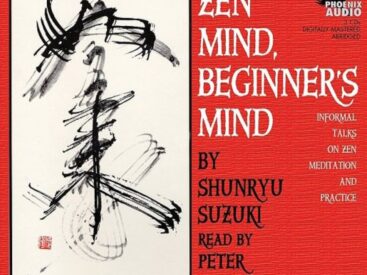The literary world is a living, breathing entity, constantly evolving to reflect society’s pulse, technological shifts, and cultural conversations. From experimental storytelling to a renewed focus on diverse voices, today’s literary trends are reshaping how we read, write, and connect with stories. Understanding these trends not only enriches our appreciation of modern literature but also reveals the deeper currents shaping our collective imagination.The Pulse of Modern Literatureooks today are more than just stories—they’re mirrors of our values, fears, and aspirations. Current literary trends highlight a shift toward inclusivity, innovation, and accessibility, driven by both readers and writers. Let’s explore the key movements defining contemporary literature and why they resonate so deeply.Diverse Voices and Inclusive NarrativesReaders are craving stories that reflect the world’s complexity, and publishers are responding by amplifying marginalized voices. Authors from underrepresented communities—BIPOC, LGBTQ+, and neurodivergent perspectives—are gaining prominence, offering fresh narratives that challenge traditional storytelling norms. This inclusivity broadens our understanding of human experiences and fosters empathy across cultures.
BIPOC Stories: Novels like The Vanishing Half by Brit Bennett explore race and identity with nuance.LGBTQ+ Narratives: Works like Detransition, Baby by Torrey Peters push boundaries on gender and family.Global Perspectives: Translated works, such as Convenience Store Woman by Sayaka Murata, bring international voices to the forefront.
Genre-Blending and Experimental FormsWriters are increasingly blurring the lines between genres, mixing literary fiction with sci-fi, fantasy, or memoir to create hybrid narratives. These boundary-pushing works, like Piranesi by Susanna Clarke, combine philosophical depth with fantastical elements. Such experimentation keeps literature fresh and challenges readers to rethink storytelling conventions.TrendExample WorkWhy It Stands OutGenre-BlendingPiranesi (Susanna Clarke)Mixes fantasy and mysteryExperimental FormsDucks, Newburyport (Lucy Ellmann)Stream-of-consciousness styleCross-Genre MemoirCrying in H Mart (Michelle Zauner)Blends memoir with cultural critique |
The Role of Technology in LiteratureDigital platforms and new media are transforming how stories are created and consumed. From audiobooks to interactive narratives, technology is making literature more accessible and dynamic. These advancements are redefining the reader’s experience and expanding the literary landscape.The Rise of Audiobooks and PodcastsAudiobooks have surged in popularity, with platforms like Audible reporting millions of listeners. Literary podcasts, such as The New Yorker: Fiction, bring authors and stories to life through discussion and readings. This trend makes literature more accessible, especially for those with busy schedules or visual impairments.Audiobooks: Offer immersive narration, enhancing emotional connection.Podcasts: Provide author insights and book discussions, fostering community.Accessibility: Allows multitasking or reading for those with disabilities.
Digital and Interactive StorytellingE-books and interactive narratives, like choose-your-own-adventure stories or apps with branching plots, are gaining traction. Platforms like Wattpad enable writers to share serialized stories, engaging readers in real-time. These formats democratize publishing and invite reader participation in the creative process.PlatformKey FeatureImpact on LiteratureWattpadUser-generated storiesEmpowers new writersKindle E-booksInstant access, low costExpands readershipInteractive AppsBranching narrativesEngages readers actively |
Themes Reflecting Our TimesToday’s literature is deeply tied to the issues shaping our world, from climate anxiety to social justice. Authors are weaving these themes into their work, creating stories that resonate with readers’ lived experiences. These narratives not only entertain but also spark meaningful conversations.Climate Fiction (Cli-Fi)As environmental concerns grow, climate fiction, or “cli-fi,” has emerged as a powerful genre. Books like The Ministry for the Future by Kim Stanley Robinson explore humanity’s response to ecological crises. Cli-fi encourages readers to confront environmental challenges and imagine sustainable futures.Key Themes: Climate change, dystopian futures, human resilience.Impact: Raises awareness and inspires action on environmental issues.Examples: Parable of the Sower by Octavia E. Butler, blending cli-fi with social commentary.
Social Justice and IdentityLiterature is increasingly tackling issues of race, gender, and inequality. Novels like An American Marriage by Tayari Jones delve into systemic injustice and personal identity. These stories challenge readers to reflect on societal structures and advocate for change.ThemeNotable WorkCore MessageRacial JusticeAn American Marriage (Tayari Jones)Explores systemic biasGender IdentityMiddlesex (Jeffrey Eugenides)Examines self-discoveryEconomic InequalityNomadland (Jessica Bruder)Highlights precarious living |
 The Power of Short-Form and MicrofictionIn an age of shrinking attention spans, short-form literature is thriving. From flash fiction to serialized social media stories, these bite-sized narratives pack emotional punches in minimal words. They’re perfect for readers seeking quick, impactful reads.Flash Fiction and MicrofictionFlash fiction (under 1,000 words) and microfiction (under 300 words) are booming, with platforms like Twitter hosting vibrant writing communities. Stories like The Drowning Girl by Caitlin R. Kiernan showcase how brevity can deliver depth. These formats challenge writers to distill stories to their essence.
The Power of Short-Form and MicrofictionIn an age of shrinking attention spans, short-form literature is thriving. From flash fiction to serialized social media stories, these bite-sized narratives pack emotional punches in minimal words. They’re perfect for readers seeking quick, impactful reads.Flash Fiction and MicrofictionFlash fiction (under 1,000 words) and microfiction (under 300 words) are booming, with platforms like Twitter hosting vibrant writing communities. Stories like The Drowning Girl by Caitlin R. Kiernan showcase how brevity can deliver depth. These formats challenge writers to distill stories to their essence.Flash Fiction: Short, complete stories with emotional resonance.Microfiction: Ultra-brief tales, often shared on social media.Appeal: Fits busy lifestyles and encourages creative experimentation.
Serialized StorytellingSerialized fiction, popularized by platforms like Substack, delivers stories in installments, keeping readers hooked. Authors like George Saunders use this format to build anticipation and engagement. It’s a modern twist on the serialized novels of the 19th century, tailored for digital audiences.FormatPlatform/ExampleWhy It WorksFlash FictionLiterary journals, TwitterQuick, impactful readsMicrofictionInstagram, TwitterEngages in secondsSerialized StoriesSubstack, newslettersBuilds reader loyalty |
Why These Trends MatterThese literary trends are more than fleeting fads—they reflect how we process a rapidly changing world. They matter because they shape culture, challenge assumptions, and give voice to the voiceless. Let’s explore their broader impact.Fostering Empathy and UnderstandingDiverse narratives and social justice themes help readers see the world through others’ eyes. By engaging with stories from different perspectives, we build empathy and bridge divides. This is especially vital in polarized times, as literature becomes a tool for connection.Driving Innovation in StorytellingGenre-blending, digital platforms, and short-form fiction push writers to experiment and innovate. These trends keep literature dynamic, ensuring it remains relevant in a tech-driven world. They also empower new voices, making publishing more inclusive.Reflecting Societal PrioritiesCli-fi and identity-focused stories mirror our collective concerns, from climate change to equity. They spark discussions and inspire action, turning books into catalysts for change. By engaging with these themes, readers become part of a larger conversation about our future.



